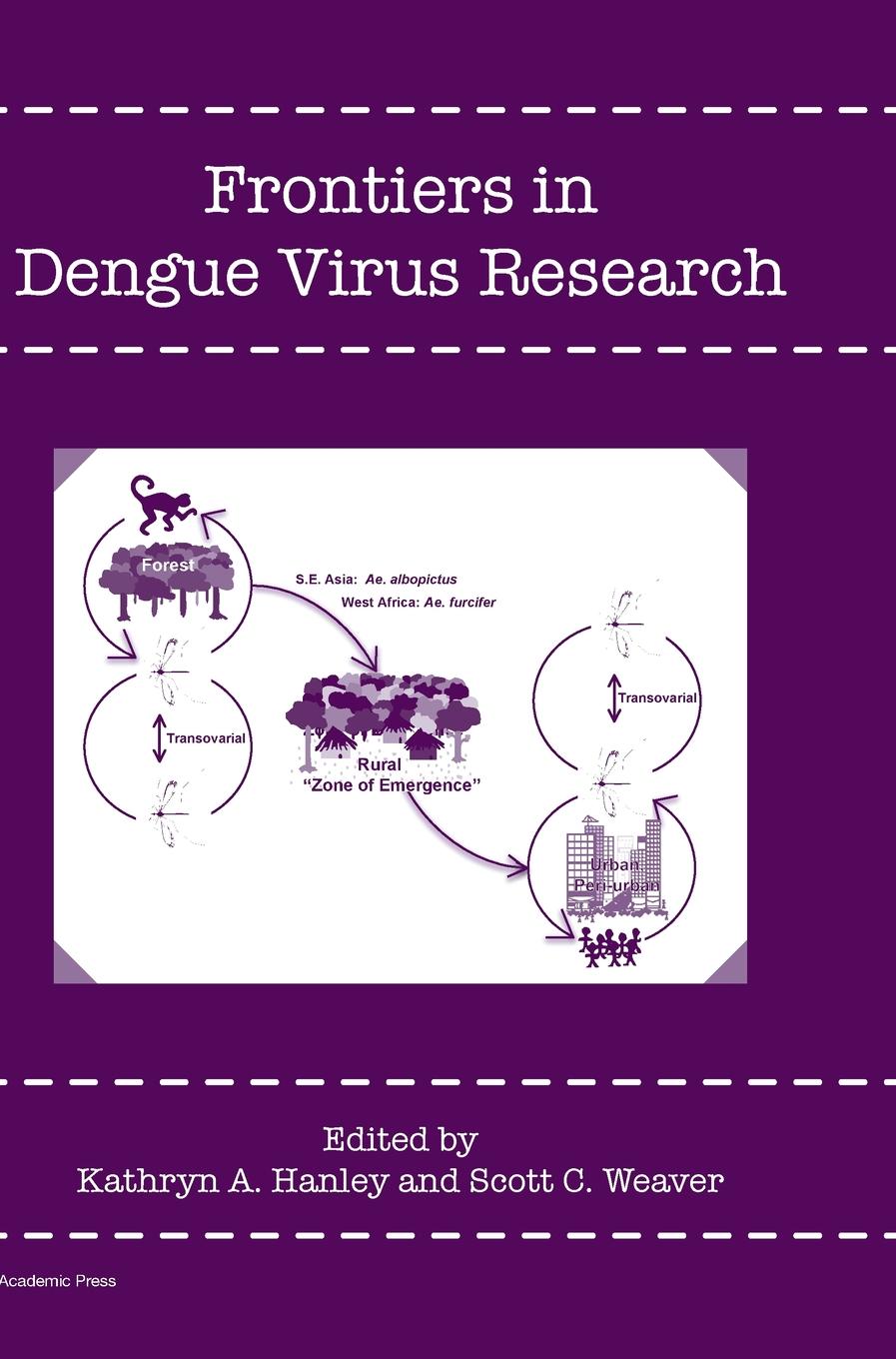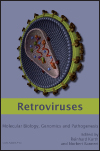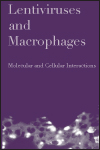|
| |
(ALSO SEE
free_lyme_books_and_information.htm)

The Plague of Ticks (1902) - Lounsbury,
Charles P. (new publishing date 2010)
Description: This scarce antiquarian book is a selection from Kessinger
Publishings Legacy Reprint Series. Due to its age, it may contain
imperfections such as marks, notations, marginalia and flawed
pages. Because we believe this work is culturally important, we
have made it available as part of our commitment to protecting,
preserving, and promoting the worlds literature. Kessinger
Publishing is the place to find hundreds of thousands of rare and
hard-to-find books with something of interest for everyone!
Tick Mite Arachnid Britain Biology 1961
THE TERRESTRIAL ACARI OF THE BRITISH ISLES an introduction to their
morphology, biology and classification, VOLUME 1 (ONLY this one volume),
by G Owen Evans, Trustees of the British Museum, 1961, hard cover with
jacket, fantastic images inside! I love these obscure types of titles!
Minor wear, more wear to jacket edges, large tears to jacket at spine
ends, light jacket edge discolor. Displayable!  http://www.empirestatelymediseaseassociation.org/BOOKS/TheLymeAutismConnectionBook.htm http://www.empirestatelymediseaseassociation.org/BOOKS/TheLymeAutismConnectionBook.htm

CHILDREN'S BOOKS
Tick-Borne Illness - Colligan, Louise (2008)
Children's & Young Adult Books

bloodsucker-series-HC



 .jpg)




 

Borrelia: Molecular Biology, Host
Interaction and Pathogenesis | Book
Publisher: Caister Academic Press
Editor: D. Scott Samuels and Justin D. Radolf
The University of Montana, Missoula, USA and University of
Connecticut Health Center, Farmington, USA (respectively)
Publication date: March 2010 Available
now!
ISBN: 978-1-904455-58-5
Price: GB £159 or US $310 (hardback).
Pages: xii + 548 (plus colour plates)
Customers
who bought this book also bought: Pathogenic
Treponema: Molecular and Cellular Biology
The genus Borrelia, in the spirochete phylum, is not closely
related to any other bacteria and has a highly unusual genome composed
of a linear chromosome and multiple circular and linear plasmids that
appear to be in a constant state of rearrangement, recombination, and
deletion. The determination of the genome sequence of Borrelia
strains has facilitated tremendous advances in understanding this
genus at the molecular and cellular level as well as the pathogenesis
of Lyme disease and relapsing fever. In recent years there has been an
explosion of new insights into the molecular biology, genetics,
physiology, and ecology of Borrelia and its tick/vertebrate
life cycle. This research is of particular importance as the incidence
of Lyme borreliosis continues to increase.
Written by renowned scientists who have made seminal contributions
to the field, this book is a comprehensive guide to the pathogenic Borrelia,
providing researchers, advanced students, clinicians, and other
professionals with an encyclopedic overview of the molecular biology
of this important genus and the pathogenesis of diseases caused.
Leading authorities have contributed chapters on topics such as Borrelia
genomics, DNA replication, gene regulation, transcriptomics,
proteomics, metabolism and physiology, cellular structure, motility
and chemotaxis, genetic manipulation, evolutionary genetics, ecology,
tick interactions, Lyme disease and relapsing fever pathogenesis,
animal models, host response, detection, and vaccines.
The volume is essential for anyone involved in Borrelia
research and is strongly recommended for microbiologists,
immunologists, and physicians involved in spirochete research, Lyme
borreliosis, or relapsing fever. The book is a recommended reference
volume for all microbiology libraries.
Reviews:
"everything you need to know
about these Spirochetes ... updated information about the state-of-art
for research ... a fantastic source of information for scientists
working on vector-borne diseases and interested in epidemiology,
evolution, genomics ... I truly enjoyed reading this book and would
recommend it." from
Olivier A E Sparagano (Newcastle University, UK) writing
in Parasites and Vectors (2010) 3: 52
"a fantastic source of information" (Parasites and Vectors)
Preface
Introduction
David A. Haake
Chapter 1 The Worldwide
Saga of Lyme Borreliosis
Jorge L. Benach and Juan Carlos García-Moncó
The clinical-epidemiologic studies of a cluster of arthritis in Lyme,
Connecticut, intersected with ongoing studies on tick borne diseases in
Long Island, New York to set the stage for the discovery of the
spirochete agent of Lyme disease. Studies on the microbiology of
spirochetes in other parts of the country were instrumental for the
cultivation of the newly discovered organism. The multi-national
clinical studies in Europe throughout the XXth century on the
dermatologic and neurologic manifestations characterized and enlarged
the syndrome that we now know as Lyme borreliosis. For reasons that are
discussed in this chapter, controversies have arisen among advocate
patient groups and the clinicians and scientists that are at the
forefront of research in Lyme borreliosis. Polarized opinions on what
constitutes this disease and how to treat it have resulted in
unprecedented litigation involving medical societies and advocate
patient groups with no obvious end in sight.
Chapter 2 Borrelia
Genomics: Chromosome, Plasmids, Bacteriophages and Genetic Variation
Sherwood R. Casjens, Christian H. Eggers and Ira
Schwartz
All members of the Borrelia genus that have been examined harbor
a linear chromosome that is about 900 kbp in length as well as a
plethora of both linear and circular plasmids in the 5-220 kbp size
range. Genome sequences have been determined for B. burgdorferi, B.
garinii, B. afzelii, B. duttonii and B. recurrentis.
The chromosomes, which carry the vast majority of the housekeeping
genes, appear to be very constant in gene content and organization
across the genus. The content of the plasmids, which carry most of the
genes that encode the differentially-expressed surface proteins that
interact with Borrelia's arthropod and vertebrate hosts, are much
more variable. B. burgdorferi strain B31, the B. burgdorferi
type strain, has been studied in the most detail and harbors twelve
linear and nine circular plasmids that comprise about 612 kbp. The
plasmids are unusual, as compared to most bacterial plasmids, in that
they contain many paralogous sequences, a large number of pseudogenes
and, in some cases, essential genes. In addition, a number of the
plasmids have features suggesting that they are prophages. Some
correlations between genome content and pathogenicity have been deduced
and comparative whole genome analyses promise future progress in this
arena.
Chapter 3 Replication of
the B. burgdorferi Genome and Scrambling of the Linear Replicons
Through Reverse Telomere Resolution
George Chaconas
The highly unusual segmented genomes of Borrelia species can
contain over 20 autonomously replicating DNA molecules. Many of the
molecules, including the chromosome, are linear with covalently closed
hairpin ends. Current knowledge of the replication and maintenance of
DNA molecules will be reviewed, including the process of telomere
resolution, whereby the covalently closed hairpin ends are generated
from replicative intermediates. Finally, the proposal that reverse
telomere resolution is the driving force shaping the ongoing
rearrangements and telomere exchanges in the linear replicons of Borrelia
species will be discussed.
Chapter 4 Gene
Regulation, Transcriptomics and Proteomics
Jon T. Skare, James A. Carroll, X. Frank Yang, D.
Scott Samuels and Darrin R. Akins
Lyme disease is a tick-borne infection that can lead to chronic,
debilitating complications if not recognized or treated appropriately. Borrelia
burgdorferi, the agent of Lyme disease, is maintained in nature by a
complex enzootic cycle involving ticks and various vertebrate hosts.
Since the initial finding over a decade ago that outer surface
lipoproteins OspA and OspC are differentially expressed in the tick and
mammal, many studies have reported that B. burgdorferi
differentially expresses a vast array of genes and proteins to help it
adapt to growth in the unfed tick, feeding tick and mammalian host
environments. Several global microarray studies have utilized various
cultivation systems to identify genes regulated by environmental cues
and/or mammalian host factors. The combined studies have been directed
at identifying genes that are differentially expressed during the unique
enzootic life cycle of this pathogen. While the microarray studies have
identified hundreds of genes that are differentially expressed under
various environmental conditions, recent advances in genetic
methodologies have begun providing insight into the mechanisms
underlying the differential gene expression observed. Although how most
genes are transcriptionally regulated in the tick and/or mammal is still
unclear, several regulatory proteins, including alternative sigma
factors, DNA-binding proteins and transcriptional activators/repressors
have been identified that either directly or indirectly control the
differential expression of many genes in B. burgdorferi. Studies
on the various transcriptional regulators, alternative sigma factors and
DNA-binding proteins identified thus far have provided important
insights into the adaptive strategies employed by B. burgdorferi
as it cycles between the tick and the mammal. In recent years,
functional proteomic-based assays also have become an important tool for
examining the complement of proteins synthesized by Lyme disease
spirochetes under experimental conditions that mimic various host
environments.
Chapter 5 Metabolism and
Physiology of Borrelia
Frank Gherardini, Julie Boylan, Kevin Lawrence and
Jon Skare
In this chapter, we attempt to define key biochemical pathways and
metabolic systems that are the underpinning of the physiology of Borrelia.
Energy extracted from the fermentation of a few simple sugars fuels
these biochemical reactions and also energizes a V-type ATPase (V-ATPase).
This establishes a membrane potential that drives motility and the
transport of most solutes. After transport, metabolites and biochemical
intermediates, such as simple sugars, fatty acids, purines and
pyrimidines, peptides and metals ions, are chemically utilized and/or
modified to provide an intracellular pool of compounds necessary for
protein, nucleic acid, membrane and cell wall biosynthesis. The
extremely limited de novo biosynthetic capacity of Borrelia
restricts members of this genus to a host-dependent lifestyle but
conserves energy and reflects a reduction of the genome that is an
interesting example of adaptive biology.
Chapter 6 Structure,
Function and Biogenesis of the Borrelia Cell Envelope
Sven Bergström and Wolfram R. Zückert
Over the past two decades, modern molecular tools have been crucial in
shaping our current concepts of the Borrelia cell envelope.
Although Borrelia spirochetes are often, but mistakenly described
as Gram-negative bacteria due to their diderm, i.e. double-membrane
envelopes, a closer examination reveals significant differences in
composition and architecture. Probably most striking is the lack of LPS,
the presence of major surface lipoproteins at the host-pathogen
interface during transmission, persistence and ensuing pathogenic
processes and the additional function of periplasmic flagella in
defining cell shape. While surface lipoproteins such as the Osps
interact with a variety of ligands in different organ tissues, they are
also targets of the immune response and several have emerged as vaccine
candidates. Some of the identified periplasmic lipoproteins, i.e. the
OppAs, are components of substrate transport complexes. Investigations
into integral membrane proteins led to the identification of several Borrelia
porins: P13, whose structure and function is unknown, DipA, which is
specific for dicarboxylates and P66 (Oms66), which has a dual role as a
pore-forming outer membrane protein with an extremely high single
channel conductance and an adhesin for β3-integrin. The recently
identified Tol homologs BesA, -B and -C appear to form a Type I
'channel' to export exogenous toxic agents such as antibiotics and to
maintain infectivity by an unknown mechanism. Initial studies on
envelope biogenesis pathways based on diderm proteobacterial model
organisms already revealed significant deviations from the norm. This
further bolsters the unique status of Borrelia among microbial
pathogens.
Chapter 7 The Chic
Motility and Chemotaxis of Borrelia burgdorferi
Stuart F. Goldstein, Chunhao Li, Jun Liu, Michael
Miller, Md. Abdul Motaleb, Steven J. Norris, Ruth E. Silversmith and
Charles W. Wolgemuth and Nyles W. Charon
The motility of Borrelia burgdorferi is complex, enigmatic, yet
quite elegant. Here we address specific and unique aspects of borrelial
motility and chemotaxis. For B. burgdorferi, in contrast to most
spirochete species, the periplasmic flagella have a skeletal function
that affects the entire shape of the cell. These organelles allow the
spirochete to swim by generating backward-moving waves along the length
of the cell and they do so by rotating within the periplasmic space. The
well studied paradigm of Escherichia coli and Salmonella
enterica serovar Typhimurium motility and chemotaxis does not
directly apply to these unique bacteria. Recent advances are presented
and summarized with respect to cell and periplasmic flagella structure,
along with an exciting analysis of the in situ hook-basal
body-motor complex. In addition, advances in the dynamics of motility,
how B. burgdorferi swims, their chemotaxis, gene regulation and
the role of motility and chemotaxis in the biology of B. burgdorferi
are summarized. Now that a foundation in this field has been
established, the future can only continue to be exciting as we sort out
the structure, function, regulation and the role of motility and
chemotaxis in the life cycle of B. burgdorferi.
Chapter 8 Genetic
Manipulation of Borrelia burgdorferi
Patricia A. Rosa, Felipe Cabello and D. Scott Samuels
Genetic studies in Borrelia burgdorferi require special
consideration of the bacterium's segmented genome, complex growth
requirements and evolutionary distance from other genetically tractable
bacteria, among other features. Despite these challenges, molecular
genetics has been applied with growing success to study the biology and
virulence of this important human pathogen. In this chapter we summarize
the tools and techniques that are currently available for the genetic
manipulation of B. burgdorferi, placing them in the context of
their utility and shortcomings. Our primary objective is to help
researchers discern what is feasible and what is not practical when
thinking about potential genetic experiments in B. burgdorferi.
We have summarized published methods and highlighted their critical
elements, but we have not provided detailed protocols. Although a number
of advances have been made since B. burgdorferi was first
transformed nearly 15 years ago, some fairly standard components of a
good genetic system remain elusive. We mention these limitations as well
and why they persist, if known. We hope to encourage investigators to
explore what might be possible, in addition to recognizing what
currently can be achieved, through genetic manipulation of B.
burgdorferi.
Chapter 9 Evolutionary
Genetics of Borrelia burgdorferi sensu lato
Daniel Dykhuizen and Dustin Brisson
Evolution can inform our understanding of the biology of Borrelia.
Four forces propel evolutionary change: mutation, genetic drift,
migration and natural selection. Although these microevolutionary forces
act primarily within populations, the same forces create
macroevolutionary divergence of species. The prevailing data suggest
that Borrelia burgdorferi sensu lato was once a wide-ranging
species in the Northern Hemisphere that rapidly separated into the
species present today. The limited neutral divergence within species
suggests that the long-term effective population size is small. The
combined observations that Borrelia was once a very wide-ranging
species and that the current effective population sizes of the species
are very small suggests that Borrelia populations can expand
rapidly when conditions are favorable and shrink rapidly when conditions
are unfavorable. Divergence among and within genospecies has progressed
primarily by mutation, as horizontal gene transfers are rare; so rare
that most observed recombinants seen in nature are likely to have been
selected to maintain genetic diversity. Recent migration, as well as
range expansions and contractions, have resulted in overlapping patchy
distributions of genospecies across the Northern Hemisphere. Most
likely, infected birds are responsible for long distance migration,
while infected mammals are important in range expansion and migration
between local populations. Natural selection, especially that promoting
host specificity, continues to shape the geographic distribution as well
as the genetic diversity within and between species.
Chapter 10 Ecology of
Borreliae and Their Arthropod Vectors
Joseph Piesman and Tom G. Schwan
Borreliae are unique among the pathogenic spirochetes by requiring
obligate blood-feeding arthropods for their transmission and maintenance
in susceptible vertebrate host populations. With one exception, ticks
transmit all borreliae and nearly all species are maintained in enzootic
foci with humans being only accidental victims to infection. The true
relapsing fever spirochetes are transmitted by many species of soft (Argasidae)
ticks in the genus Ornithodoros and in many geographic areas,
specific species of ticks transmit only one species of spirochete.
Specific tick-spirochete associations range from near-desert conditions
to high elevation coniferous forests. The four principal hard tick (Ixodidae)
species that transmit Lyme disease spirochetes (Borrelia burgdorferi
sensu lato) include Ixodes scapularis in eastern North America, I.
pacificus in western North America, I. persulcatus in Asia
and I. ricinus in Europe. These ticks are basically forest
dwellers, spending most of their time hiding in the leaf litter of the
forest floor, where humidity is high and the risk of desiccation is low.
B. burgdorferi sensu stricto, B. garinii and B. afzelii
are the principal genospecies causing human disease. Of these three
genospecies, B. burgdorferi sensu stricto is unique in that it
has a Holarctic distribution, spanning both the Old World (Palearctic
Region) and the New World (Nearctic Region) in the northern hemisphere.
Specific rodents were originally identified as the principal reservoirs
of B. burgdorferi sensu stricto, including the white footed mouse
(Peromyscus leucopus) in North America and the wood mouse (Apodemus
sylvaticus), yellow-necked mouse (Apodemus flavicollis) and
bank vole (Clethrionomys glareolus) in Europe. Birds also have
been identified as reservoirs of B. burgdorferi sensu stricto on
both sides of the Atlantic. Since the discovery of the Lyme borreliosis
spirochete in 1982, a plethora of knowledge concerning the ecology of
the spirochete, its tick vectors and vertebrate hosts has been brought
forth through an incredible focus of research efforts. The task before
the public health research community is not solely producing more
ecological knowledge regarding the Lyme borreliosis spirochetes cycle in
nature. Clearly, our immediate challenge is to synthesize and harness
available knowledge of spirochete-tick-host interactions to develop
ecologically-based interventions to combat Lyme borreliosis.
Chapter 11 Tick
Interactions
Utpal Pal and Erol Fikrig
Borrelia burgdorferi causes Lyme disease in a variety of
animals and humans. The spirochete is maintained in an enzootic cycle
that primarily involves small mammals and Ixodes spp. ticks. In
the Northeastern United States, I. scapularis is the main vector.
As only I. scapularis and closely related ticks transmit B.
burgdorferi, the spirochete-tick interactions are thought to be
highly specific. Several spirochete and tick proteins that directly or
indirectly contribute to the natural cycle of B. burgdorferi
infection have been identified. This chapter will focus on past
discoveries and future challenges that are relevant to our understanding
of B. burgdorferi-tick interactions and on the development of
novel preventive measures that interfere with the B. burgdorferi
life cycle.
Chapter 12 Pathobiology
of Lyme Disease Borrelia
Steven J. Norris, Jenifer Coburn, John M. Leong,
Linden T. Hu and Magnus Höök
Lyme disease Borrelia are host-dependent, tick-transmitted,
invasive, nontoxigenic, persistent pathogens that cause disease in
humans and other mammals primarily through the induction of inflammatory
reactions. During transmission from the infected tick, the bacteria
undergo dramatic changes in gene expression, resulting in adaptation to
the mammalian environment. Expression of outer surface protein C (OspC)
is essential during these early stages of colonization, although the
mechanism by which OspC promotes spirochetal infectivity is unknown.
Organisms multiply and spread locally and induce an inflammatory
response that in humans results in an erythema migrans, the hallmark
lesion of localized infection. The spirochetes enter the bloodstream
during the primary infection and colonize multiple tissue sites, leading
to the disseminated stage of infection. Motility and chemotaxis
mechanisms undoubtedly play a role in this process. Several borrelial
proteins have been implicated in adherence to host cell surface proteins
and extracellular matrix components and are likely to be involved in the
homing of Borrelia to histologic compartments within each tissue,
penetration of blood vessels and adherence to and migration through
endothelial cells and tissue strata at distant sites. Activation of
plasmin on the bacterial surface and induction of host proteases are
thought to facilitate dissemination and/or inflammation. Most tissue
damage appears to result from host inflammatory reactions. Although the
mechanisms are not entirely understood, induction of cytokine/chemokine
expression by bacterial lipoproteins and the resulting recruitment and
activation of lymphocytes, macrophages and granulocytes play a major
role in both local histopathology and constitutional symptoms. Despite
their relatively low densities in tissues, Borrelia cause
neurologic, cardiovascular, arthritic and dermatologic manifestations
during the disseminated and persistent stages of infection by mechanisms
that remain largely a mystery. Immune evasion mechanisms, including the vls
antigenic variation system, complement-regulator acquiring surface
proteins (CRASPs), down-regulation of highly antigenic surface proteins
(such as OspC) and invasion of protective niches, permit the survival of
the pathogens for months to years following infection despite robust
antibody and cellular responses.
Chapter 13 Pathogenesis
of Relapsing Fever
Alan G. Barbour and Betty P. Guo
Relapsing fever is caused by several species of Borrelia, all but
one of which are transmitted from reservoir animals to humans by soft (argasid)
ticks. The exception is B. recurrentis, which is transmitted from
one human to another by the body louse and, under certain conditions,
may cause large epidemics. Relapsing fever Borrelia species have
a number of properties that facilitate invasion and dissemination in the
mammalian host; these include neurotropism and adhesiveness for
erythrocytes and platelets. But their most characteristic pathogenetic
feature is multiphasic antigenic variation. Surface-exposed lipoproteins
largely determine the antigenic identities of the spirochetes. Switching
between genes encoding these highly polymorphic proteins is accomplished
by a recombination in which the active gene at a single expression site
is replaced by a copy of an archived, silent gene. The order of
appearance of serotypes during infection is partially the function of
the location of the archived gene and the surrounding sequences.
Chapter 14 Animal Models
of Borreliosis
Stephen W. Barthold, Diego Cadavid and Mario T.
Philipp
Animal models have been extremely useful for understanding many features
of Lyme and relapsing fever borrelioses, including pathogenesis, host
response, host-vector interactions, in vivo bacterial gene
regulation, vaccinology and chemotherapy. Some degree of overlap is
necessary with these subjects that are covered in other chapters, but
this chapter attempts to focus on descriptive and practical aspects of
various animal models used for borreliosis research.
Chapter 15 Host Response
Janis J. Weis and Linda K. Bockenstedt
The goal of this chapter is to provide an understanding of the dynamics
of host responses during infection with Borrelia burgdorferi.
Pertinent literature will be reviewed with emphasis on studies that
influenced our understanding of both the earliest responses of the
mammalian host to infection by B. burgdorferi and those that are
associated with chronic infection and disease. Discussion of host
responses in this chapter has direct implications for the pathogenesis
of Lyme disease and will refer to aspects of the Pathobiology chapter by
Norris et al. Animal models, which are more thoroughly discussed in the
chapter by Barthold et al., have been critical to our understanding of
the mechanistic aspects of the host response to B. burgdorferi.
This chapter will focus on the most widely studied animal model of Lyme
borreliosis, the mouse model, with comparison made to human disease. The
initial response to infection occurs before the spirochete and mammalian
host have made direct contact, that is, during tick feeding and for this
reason, reference also will be made to the Tick Interactions chapter by
Pal and Fikrig. The host response is important to two features of Lyme
borreliosis: the control of the spirochete and the development of tissue
damage and clinical manifestations. Reference to the chapter by Radolf
et al. on Lyme Disease in Humans will direct the reader to assessment of
these responses in the context of the patient experience.
Chapter 16 Detection of Borrelia
burgdorferi
Guiqing Wang, Maria E. Aguero-Rosenfeld, Gary P.
Wormser and Ira Schwartz
Numerous methods have been developed for detection of Borrelia
burgdorferi in a variety of specimen sources. These can be broadly
divided into direct and indirect approaches. B. burgdorferi can
be visualized by microscopy, cultivated from numerous clinical and
environmental specimens and detected by PCR-based modalities. These
direct detection techniques are extensively used in experimental and
epidemiological studies, but have not been widely employed as diagnostic
approaches in the clinical setting. Immunological detection of B.
burgdorferi by ELISA and immunoblot is currently the primary tool
for laboratory diagnosis of Lyme disease in humans. Recent advances in
serologic testing include the development of assays based on recombinant
B. burgdorferi antigens or derived peptides, rather than
sonicated whole cell lysates.
Chapter 17 Lyme Disease
Vaccines
Richard T. Marconi and Christopher G. Earnhart
The incidence of Lyme disease is increasing and its endemic regions are
expanding. Preventive strategies that have focused primarily on
increased public awareness and tick avoidance have proven ineffective.
Vaccination remains a viable approach to be pursued in the prevention of
Lyme disease. This chapter summarizes past, present and future efforts
directed at the development of Lyme disease vaccines.
Chapter 18 Lyme Disease
in Humans
Justin D. Radolf, Juan C. Salazar and Raymond J.
Dattwyler
Lyme disease is a rapidly emerging tick-borne, complex, multi-system
infectious disorder caused by the spirochetal bacterium Borrelia
burgdorferi. The ailment, which affects adults and children alike,
is widespread in the Northern Hemisphere and it continues to expand as
humans encroach on the sylvatic habitat of the spirochete's mammalian
reservoirs. Since first identified in the 1970s the incidence of Lyme
disease has increased more than 30-fold and it is now considered the
most prevalent arthropod-transmitted infection in both the United States
and Europe. B. burgdorferi is transmitted by ticks of the Ixodes
ricinus complex, including I. scapularis, I. ricinus
and I. persulcatus. In North America, B. burgdorferi sensu
stricto is the only species proven to be pathogenic for humans. In
Europe, both B. afzelii and B. garinii are most commonly
associated with human disease. The spirochete's genomic features, as
well as its unique molecular architecture, are considered to have a
seminal role not only in how it is transmitted from ticks to humans, but
also how it triggers immune responses in afflicted individuals.
Inflammatory manifestations associated with the disease result from the
host's innate and adaptive immune responses to the bacterium, rather
than from toxigenic molecules, which borrelia cannot produce. Indeed,
the deposition of spirochetes into human dermal tissue generates a local
inflammatory response that becomes manifest as erythema migrans (EM),
the hallmark skin lesion of Lyme disease in North America. In Europe,
two additional dermatologic disorders, borrelial lymphocytoma and
acrodermatitis chronicum atrophicans (ACA) are frequently associated
with infection. EM is frequently accompanied by 'flu-like' symptoms,
including myalgias, arthralgias and fever, which are generally believed
to be cytokine-mediated in response to hematogenous spread of the
bacterium. If treated appropriately, the prognosis is excellent;
however, if untreated, patients may develop a wide range of inflammatory
clinical manifestations, most commonly involving the central nervous
system, joints and heart. Within days of treatment, the signs and
symptoms associated with the disease typically begin to subside,
although in some individuals a complete recovery can take several weeks
or even months. A minority of treated patients may go on to develop a
poorly defined fibromyalgia-like illness, which is not responsive to
prolonged antimicrobial therapy. Below we integrate current knowledge
regarding the ecological, epidemiological, microbiological and
immunological facets of Lyme disease into a conceptual framework that
sheds light on the disorder that healthcare providers encounter.
(EAN: 9781904455585 Subjects: [microbiology] [medical microbiology]
[molecular biology] [genomics])

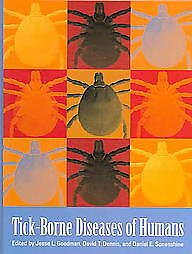 |
Tick-Borne Diseases of Humans by Jesse L. Goodman
(2005, Hardcover)
Publisher's Note
In this American Society of Microbiology publication, international
field specialists present the latest information on the biological,
ecological, and clinical aspects of tick-borne diseases that infect
humans. To familiarize clinicians with these infections,
contributors to 21 chapters discuss such topics as tick life cycles,
the diversity of bacteria associated with ticks, integrated pest
management, and other methods for managing ticks and tick-borne
diseases. A color atlas shows the geographical distribution of
patients with the signs of such conditions as Lyme disease, Rocky
Mountain spotted fever, encephalitis, and tularemia. Goodman is with
the Food and Drug Administration's Center for Biologics Evaluation
and Research, Rockville, Maryland. Annotation ©2005 Book News,
Inc., Portland, OR (booknews.com)
|
Tick-borne Diseases, Lyme Disease by Jonathan A. Edlow,
Jonathan Edlow (2008, Hardcover)$83.35
| Key Details |
| Author: |
Jonathan A. Edlow,
Jonathan Edlow |
| Language: |
English |
| Series: |
The Clinics:
Internal Medicine |
| Format: |
Hardcover |
| ISBN-10: |
1416057846 |
| ISBN-13: |
9781416057840 |
Publisher's
Note
The incidence of Lyme disease has increased in the
last 20 years and threatens to increase more in the
future. Lyme disease can be hard to detect and can
have serious consequences if not treated. This issue
covers both acute and chronic Lyme disease, with
detailed descriptions of the various body systems
affected, and also discusses diagnosis and
treatment.
NUTTALL
TICK CATALOGUE * Keirans * 1984 * Research
The Cattle Tick: Studies of the Egg and Seed Tick
Stages, a Simple Method of Eradicating the Tick (1906) - Newell, Wilmon
|Dougherty, M. S.
Piroplasma Canis and Its Life Cycle in the Tick
(1907) - Christophers, Samuel Rickard
Studies on the Biology of the Texas-Fever Tick -
Graybill, H. W.
The
genus Rhipicephalus (Acari, Ixodidae): Brown
ticks
Texas or tick fever
(Farmers' bulletin / United States
Product Category : Books
Title : Texas or tick fever (Farmers' bulletin / United
States Department of Agriculture)
Authors : John R Mohler
Binding : Unknown Binding
Publisher : U.S. Dept. of Agriculture
Publication Date : 1928
Haemaphysalis Ticks of India by A. C.
Mishra, G. Geeverghese
Publication
Year: 2011
Publisher: Elsevier Science Ltd ISBN-10:012387811X
Language: English
Biology of Ticks by
Daniel E. Sonenshine (1993) Volume 2
Ticks:
Digging for Blood by Barbara A. Somervill
Children's & Young Adult Books
Carnivorous Ticks Attack by Nancy Crofoot
Ticks
by Kris Hirschmann
Cattle Tick Eradication in Northwest Arkansas (1907) Author: W.
G. Vincenheller
Ticks: Biology, Disease and Control by Alan S Bowma
Ecological Dynamics of Tick-Borne Zoonoses (2008) Description:
In-depth coverage of ticks, their pathogens and control measures, written by an
international collection of experts. Edited by Alan
Bowman, Patricia Nuttall
Publisher's note: The ecological relationships
found to exist between tick vectors and pathogens in their zootic cycle can
profoundly influence patterns of transmission and
disease for humans and domestic animals. This book
examines the ecological parameters affecting the
conservation and regulation of tick-borne zoonoses
as well as the geographic and seasonal distributions
of those infections. Written by an eminent authority
on the subject, the book will be sought after by
students and researchers in ecology, invertebrate
zoology, parasitology, entomology, public health,
and epidemiology.
On One
Flower: Butterflies, Ticks and a Few More Icks by Anthony
D. Fredericks, Jennifer DiRubbio
(2007) With a blend of science and rhyming text, this picture book
features the animals that live together on a goldenrod flower. It includes
beauties like the butterfly, some are nearly blind and wander around, like the
ladybird. Some are productive, like the honeybee. Some are just hungry, like the
spider, and more. It is suitable for ages 4-10.
Ticks by
Kristin Petrie 2008) Children's & Young Adult Books
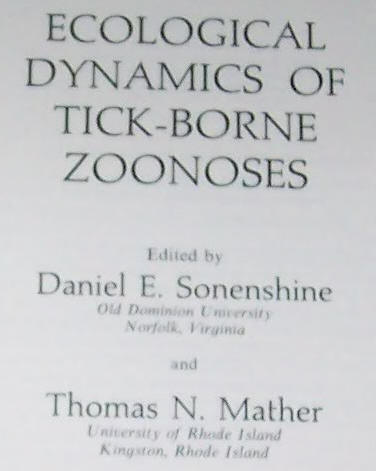 Ecological
Dynamics Tick Borne Zoonoses
(1994) "A zoonosis disease can be transmitted to humans
from animals. The ecological relationships found to exist
between tick vectors and pathogens in their zootic cycle
can profoundly influence these patterns of transmission
and disease." This book examines the ecological parameters
affecting the conservation and regulation of tick-borne zoonoses as well as the geographic and seasonal
distributions of those infections. Topics covered include
population ecology of tick vectors, vector-host pathogen
relationships, geographic dissemination and dynamics and
management of tick-borne zoonoses, together with the
dynamic associations which affect domestic and animal
health." ISBN 0195073134 . With diagrams, tables and
index.
Ecological
Dynamics Tick Borne Zoonoses
(1994) "A zoonosis disease can be transmitted to humans
from animals. The ecological relationships found to exist
between tick vectors and pathogens in their zootic cycle
can profoundly influence these patterns of transmission
and disease." This book examines the ecological parameters
affecting the conservation and regulation of tick-borne zoonoses as well as the geographic and seasonal
distributions of those infections. Topics covered include
population ecology of tick vectors, vector-host pathogen
relationships, geographic dissemination and dynamics and
management of tick-borne zoonoses, together with the
dynamic associations which affect domestic and animal
health." ISBN 0195073134 . With diagrams, tables and
index.
Books
on Filaria are urgently recommended by Empire State Lyme Disease
Association because it seems that Filaria has been sorely overlooked in the Western
World as a cause of illness whereas it is highly recognized and treated in third
world countries. Nematodes have been found in ticks in the USA and so far,
according to our information, worm infections are only treated by a handful of
infectious disease doctors and a smaller handful of "Lyme"
doctors. Patients who are treated seem to recover very well.
One woman told me tht a nine inch worm was eliminated from her body. Recently,
I personally saw worms coming out of a patient's head when I went to her house
to try to help her. Another illustration of this unrecognized problem is
the story of one of our Lyme support group leaders. She had recovered from
her Lyme and tick borne diseases when an insistent, painful, frightening rash
appeared over parts of her body. After a year and a half of going to Lyme
doctors, infectious disease doctors and dermatologists, being tested, finding
out that it seemed that her Lyme disease had returned, an underlying cause of
possibly all of her problems was discovered.
She
was finally diagnosed with a Filarial infection, known as Strongyloides.
So, indeed, worms
may be yet another factor in what has contributed to
some patients having "Chronic Lyme Disease."
The
following book is on pharmaceutical treatment for Helminthes. (Filaria)

PLEASE
NOTE WELL:

Syphilis and
Borrelia have been said to be close cousins, with a major difference in that
Borrelia works more quickly in the body where it can destroy, debilitate and manifest
as conditions like dementia in as little time as a few months. In
comparison, Syphilis, which ironically could be called the "good twin"
in this Spirochetal family, will take 30 years to completely debilitate the
patient and manifest as dementia.
Lyme disease is
known as the Second Great Imitator with Syphilis being known as the First.
ALSO SEE The
Third Great Plague download for free:
http://www.empirestatelymediseaseassociation.org/BOOKS/The_Third_Great_Plague.htm

http://www.empirestatelymediseaseassociation.org/BOOKS/BeatingLymebyConstanceBeanwithLeslieAnnFein.htm
Beating Lyme by Constance A.
Bean has been noted by other publications as a great book on Lyme

 
on Cure Unknown at
http://empirestatelymediseaseassociation.org/BOOKS/CureUnknown.htm
Lyme
Disease: The Ecology of a Complex System by Richard Ostfield

Penicillin
in Syphilis
http://jama.ama-assn.org/content/134/18/1576.2.short
By
Joseph Earle Moore, M.D., Associate Professor of Medicine and Adjunct
Professor of Public Health Administration, the Johns Hopkins University,
Baltimore. Fabrikoid. Price, $5. Pp. 319, with 57 illustrations. Charles
C Thomas, 301-327 E. Lawrence Ave., Springfield, Ill., 1946.
Excerpt
With
characteristic thoroughness Moore presents the essential points of
penicillin therapy in easily understandable form. Those interested in
the clinical use of penicillin will find the section on penicillin in
early syphilis very valuable. The same applies to the chapters on
syphilis in pregnancy, congenital syphilis, benign late syphilis,
cardiovascular syphilis and ocular syphilis. Following a detailed
discussion of treatment in these forms of syphilis the author gives a
short, pertinentsummary of results. Nearly half of the text is devoted
to fundamental information on the chemistry, pharmacology, therapeutic
activity and mode of action of penicillin. The section on the
pharmacology of penicillin in the central nervous system contains timely
advice, and the chapter on toxicity is of special interest to the
practitioner. Those who plan to read this book will be disappointed if
expecting to find solutions for all of the problems of penicillin
therapy in syphilis.
ALSO
SEE:
Syphilis
(ISBN 10: 1142233154
/ ISBN 13: 9781142233150
) Thompson,
Loyd Oscar
http://www.abebooks.com/
This
item is printed on demand. Bookseller Inventory # IH-9781142233150
Synopsis:
This
is a reproduction of a book published before 1923. This book may
have occasional imperfections such as missing or blurred pages, poor
pictures, errant marks, etc. that were either part of the original
artifact, or were introduced by the scanning process.







Written by
physicist and patient Jerry Leonard
 




Currently
unavailable:



Available,
but not recommended yet (not reviewed yet)


eDocs also
available, but not reviewed yet:
Caution Regarding
Testing For Lyme Disease

Emerging
Infectious Diseases Thomas Gale


(ALSO SEE
free_lyme_books_and_information.htm)
| |
.
|
 EMPIRE STATE LYME DISEASE
ASSOCIATION
EMPIRE STATE LYME DISEASE
ASSOCIATION





































































.jpg)












































.jpg)








